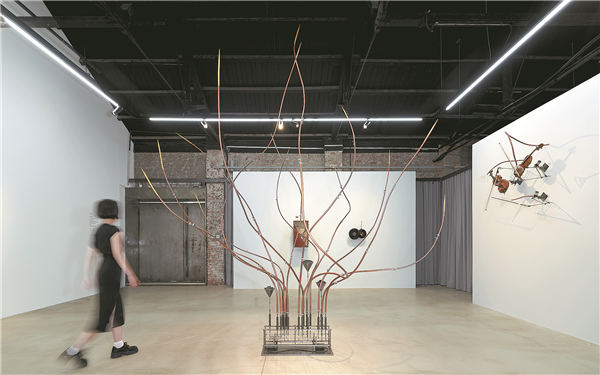

Horn's career has witnessed a few major shifts. In the 1970s, her artistic works primarily focused on performance, body-related pieces, and experimental films. By the 1980s, she gradually switched focus to mechanical sculptures featuring symbolic movements. Since the 1990s, photo collages and watercolor paintings have also become significant aspects of her artistic practice.
Horn was born in Michelstadt, Germany, in 1944. In her childhood, her Romanian governess taught her how to paint. She says that she became enamored with painting emotionally, as it was not as limited as language.
Living in Germany after the end of World War II greatly influenced her love for painting. "We didn't speak German. We had to learn French and English. We were always traveling elsewhere, speaking other languages. But painting was never restricted to a language, German, French, or English."
Horn spent most of her time in boarding school, and at the age of 19, she defied her parents' wish for her to study economics and began studying art at the University of Fine Arts Hamburg instead. In 1964, she had to withdraw from the art school and stay in a sanatorium due to a severe lung infection.
While on a journey of slow recovery, Horn began to use soft materials to create sculptures. She lived in Hamburg until 1971 and, after a brief stay in London, settled in Berlin.
In the early 1970s, Horn began to perform her body extensions, attaching structures of various woods, metals, and fabrics to her body, such as swept canvas wings, tantalizing long-fingered gloves, masks covered in pencils, and towering unicorn horns.
Over the following years, the artist's work continued to expand from prosthetics to kinetic sculptures and installations, as well as films often featuring her moving sculptures.